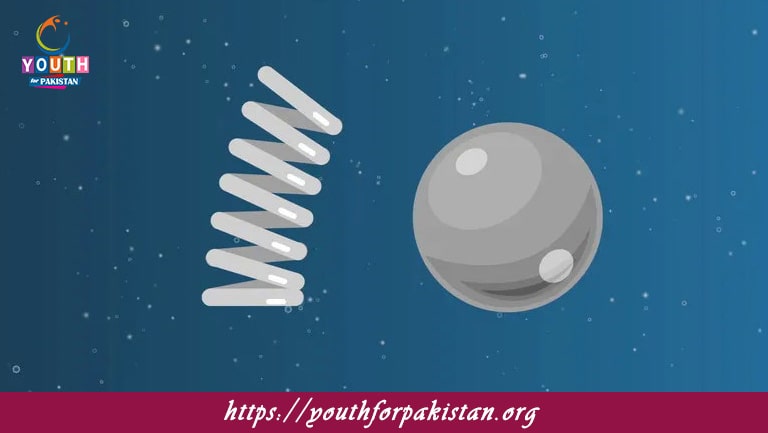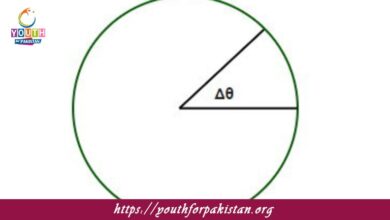Potential Energy MDCAT MCQs with Answers

Welcome to the Potential Energy MDCAT MCQs with Answers. In this post, we have shared Potential Energy Multiple Choice Questions and Answers for PMC MDCAT 2024. Each question in MDCAT Physics offers a chance to enhance your knowledge regarding Potential Energy MCQs in this MDCAT Online Test.
Potential Energy MDCAT MCQs Test Preparations
Gravitational potential energy is dependent on:
a) Height above a reference point
b) Speed of the object
c) The surface area of the object
d) The volume of the object
The potential energy of an object at a height of 10 meters with a mass of 5 kg is:
a) 50 Joules
b) 100 Joules
c) 10 Joules
d) 5 Joules
Elastic potential energy is stored in:
a) Stretched or compressed objects
b) Objects at height
c) Moving objects
d) Objects with chemical bonds
The unit of potential energy is:
a) Joule
b) Watt
c) Newton
d) Meter
If the height of an object is doubled, its gravitational potential energy becomes:
a) Twice as much
b) Four times as much
c) Half as much
d) Unchanged
The energy stored in a stretched bow is:
a) Elastic potential energy
b) Gravitational potential energy
c) Kinetic energy
d) Chemical energy
An object with a mass of 2 kg and height of 5 m has a potential energy of:
a) 10 Joules
b) 20 Joules
c) 15 Joules
d) 25 Joules
The potential energy of a body decreases when:
a) It is lowered
b) It is raised
c) Its mass increases
d) Its velocity increases
Which of the following factors does NOT affect gravitational potential energy?
a) Mass of the object
b) Height above a reference point
c) Shape of the object
d) Acceleration due to gravity
A ball thrown upward has its potential energy:
a) Increasing with height
b) Decreasing with height
c) Constant
d) Zero
The potential energy of an object at the ground level is:
a) Zero
b) Equal to its kinetic energy
c) Maximum
d) Equal to its thermal energy
The energy stored in a compressed spring is an example of:
a) Elastic potential energy
b) Gravitational potential energy
c) Chemical energy
d) Kinetic energy
The work done to lift an object is equal to its:
a) Change in gravitational potential energy
b) Kinetic energy
c) Elastic potential energy
d) Thermal energy
The potential energy of a 3 kg object at a height of 4 meters is:
a) 120 Joules
b) 30 Joules
c) 12 Joules
d) 15 Joules
The potential energy of an object increases as:
a) Its height increases
b) Its speed increases
c) Its temperature increases
d) Its volume increases
A book placed on a shelf has:
a) Gravitational potential energy
b) Elastic potential energy
c) Kinetic energy
d) Thermal energy
The potential energy of a body is directly proportional to its:
a) Height
b) Speed
c) Mass
d) Volume
The potential energy of a 10 kg object at 2 meters height is:
a) 20 Joules
b) 200 Joules
c) 100 Joules
d) 50 Joules
If the mass of an object is doubled and its height remains constant, its potential energy will:
a) Double
b) Quadruple
c) Remain unchanged
d) Halve
The potential energy of an object is due to:
a) Its position relative to a reference point
b) Its motion
c) Its temperature
d) Its shape
The energy stored in a raised weight is an example of:
a) Gravitational potential energy
b) Elastic potential energy
c) Thermal energy
d) Chemical energy
The gravitational potential energy of an object at sea level is:
a) Zero
b) Maximum
c) Equal to its kinetic energy
d) Equal to its thermal energy
A stretched rubber band has:
a) Elastic potential energy
b) Gravitational potential energy
c) Kinetic energy
d) Thermal energy
The potential energy of an object can be increased by:
a) Increasing its height
b) Increasing its temperature
c) Increasing its volume
d) Increasing its speed
The potential energy of an object is zero if:
a) It is at the reference point
b) It is in motion
c) It is compressed
d) It is heated
The energy stored in a raised object is:
a) Gravitational potential energy
b) Elastic potential energy
c) Chemical energy
d) Electrical energy
The elastic potential energy of a spring increases as:
a) The spring is stretched or compressed more
b) The spring is heated
c) The spring is cooled
d) The spring is cut
A 1 kg object at 10 meters height has a potential energy of:
a) 10 Joules
b) 50 Joules
c) 100 Joules
d) 1 Joule
The work done to lift an object is equal to the change in:
a) Gravitational potential energy
b) Kinetic energy
c) Elastic potential energy
d) Thermal energy
A 5 kg object placed at a height of 3 meters has a potential energy of:
a) 15 Joules
b) 30 Joules
c) 10 Joules
d) 25 Joules
The potential energy of an object is always measured relative to:
a) A reference point
b) Its speed
c) Its temperature
d) Its mass
The potential energy of a compressed spring is:
a) Elastic potential energy
b) Gravitational potential energy
c) Kinetic energy
d) Chemical energy
A 2 kg object at a height of 8 meters has a potential energy of:
a) 16 Joules
b) 80 Joules
c) 8 Joules
d) 32 Joules
The change in potential energy of an object is equal to:
a) The work done to change its height
b) The change in its temperature
c) The change in its speed
d) The change in its volume
The potential energy of a 4 kg object at 5 meters height is:
a) 20 Joules
b) 40 Joules
c) 10 Joules
d) 50 Joules
The potential energy of an object depends on:
a) Mass, height, and gravity
b) Speed and temperature
c) Volume and shape
d) Kinetic energy
If you are interested to enhance your knowledge regarding Physics, Chemistry, Computer, and Biology please click on the link of each category, you will be redirected to dedicated website for each category.





